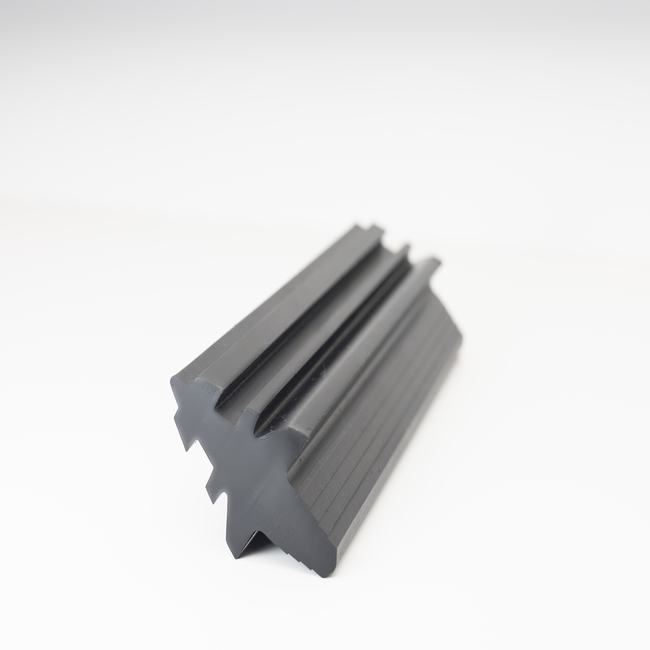Steel door seals, also known as door weatherstripping or door gaskets, are vital components in building construction and home improvement. These seals play a crucial role in enhancing the energy efficiency, security, comfort, and overall performance of doors, particularly exterior doors. A comprehensive description of steel door seals encompasses their purpose, types, materials, installation methods, and the benefits they offer.
1. Purpose of Steel Door Seals:
Steel door seals are primarily designed to serve several important functions:
a. Weatherproofing: They create a barrier against the infiltration of outdoor elements such as rain, wind, dust, and drafts. This helps maintain a comfortable indoor environment, reducing energy consumption and enhancing overall comfort.
b. Sound Insulation: Steel door seals can dampen noise from the outside, creating a quieter indoor environment. This is especially important for doors in residential and commercial settings.
c. Security: They provide an added layer of security by preventing unwanted intrusions and enhancing the door’s ability to resist forced entry.
d. Energy Efficiency: By sealing gaps and preventing air leakage, steel door seals contribute to improved energy efficiency, leading to reduced heating and cooling costs.
e. Durability: Steel door seals are built to withstand wear and tear, ensuring a longer lifespan for the door itself by protecting it from the elements.
2. Types of Steel Door Seals:
Several types of steel door seals are available, each tailored to specific applications and installation requirements:
a. Door Sweeps: These are installed at the bottom of the door to block drafts and reduce noise. Door sweeps typically have a flexible seal or brush that makes contact with the threshold.
b. Door Weatherstrips: Weatherstrips are designed to seal the gaps around the perimeter of the door. They come in various materials, such as rubber, vinyl, or foam, and can be self-adhesive or require fastening with screws or nails.
c. Threshold Seals: Threshold seals are installed at the base of the door frame to create a seal between the door and the floor. They are essential for preventing water infiltration and drafts.
d. Astragal Seals: These are used on double doors to create a seal between the meeting stiles, enhancing security and preventing drafts and water penetration.
3. Materials:
Steel door seals are available in a range of materials to suit different applications and environmental conditions. Common materials include:
a. Neoprene: Neoprene seals are durable, resistant to temperature extremes, and provide an effective seal against weather and drafts.
b. Silicone: Silicone seals are highly resistant to temperature variations and UV exposure, making them suitable for exterior doors in harsh climates.
c. Rubber: Rubber seals are cost-effective and versatile, offering good weatherproofing capabilities.
d. Vinyl: Vinyl seals are lightweight, easy to install, and provide adequate weather protection. They are often used in residential settings.
e. Metal (for Thresholds): Metal thresholds, often made from aluminum or stainless steel, provide long-lasting durability and resistance to wear and tear.
4. Installation Methods:
The installation of steel door seals can vary depending on the type of seal. Common installation methods include:
a. Adhesive Backing: Many door weatherstrips come with adhesive backing for quick and easy installation. Simply peel off the backing and press the seal in place.
b. Screws or Nails: Some seals, especially threshold seals and astragal seals, may require attachment using screws or nails for a secure fit.
c. Magnetic Seals: Magnetic seals create a strong seal when the door is closed and are often used for energy-efficient and soundproofing applications.
5. Benefits of Steel Door Seals:
Steel door seals offer several benefits, including:
a. Energy Savings: By preventing air leaks, they reduce heating and cooling costs, leading to energy savings.
b. Improved Comfort: Steel door seals create a more comfortable indoor environment by eliminating drafts and reducing noise.
c. Enhanced Security: They provide an additional layer of security by sealing gaps that could be exploited by intruders.
d. Longevity: Steel door seals protect the door and its components from weather-related damage, prolonging the door’s lifespan.
e. Environmental Impact: By reducing energy consumption, steel door seals contribute to a reduced carbon footprint.
In summary, steel door seals are indispensable components for enhancing the performance, security, and energy efficiency of doors in residential, commercial, and industrial settings. Their various types and materials make them adaptable to a wide range of applications, and their installation can significantly improve the overall quality and functionality of doors while ensuring a more comfortable and secure indoor environment.

